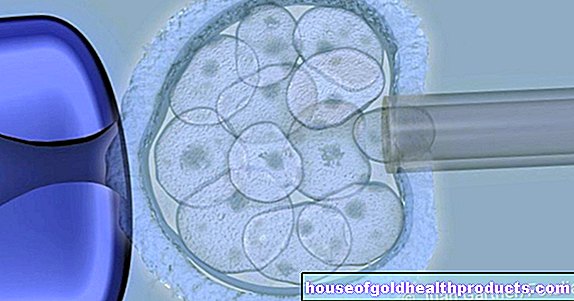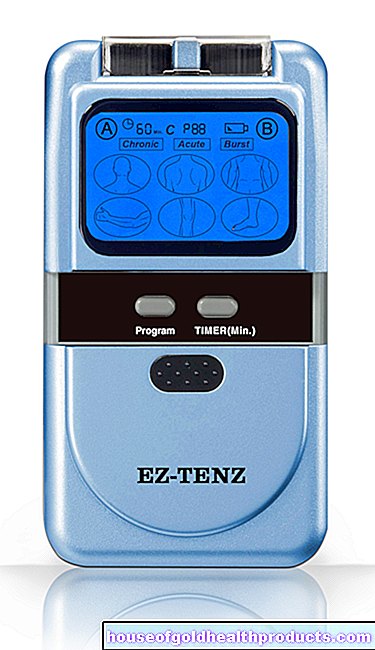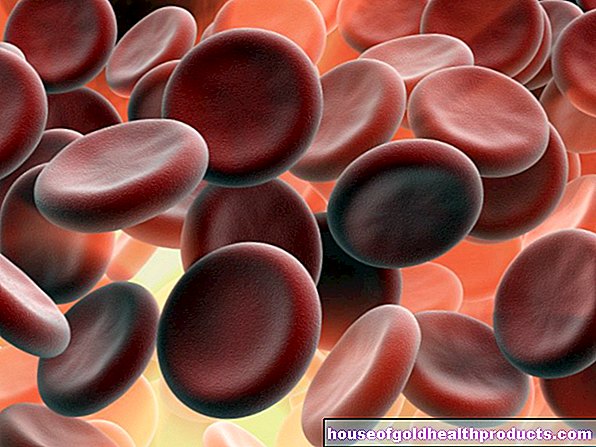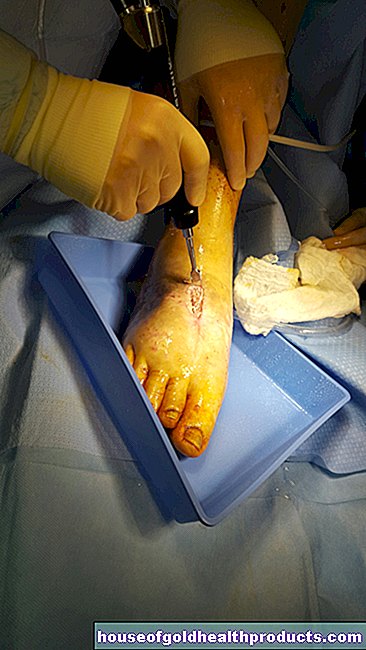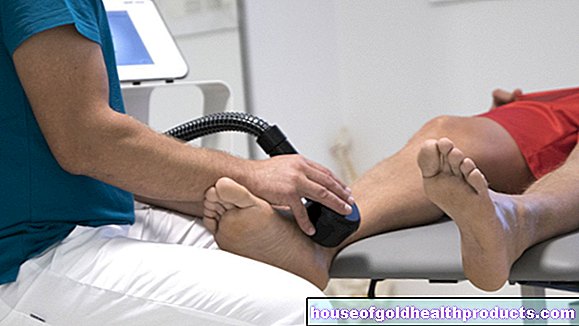Acyclovir
Updated onBenjamin Clanner-Engelshofen is a freelance writer in the medical department. He studied biochemistry and pharmacy in Munich and Cambridge / Boston (USA) and noticed early on that he particularly enjoyed the interface between medicine and science. That is why he went on to study human medicine.
More about the experts All content is checked by medical journalists.Acyclovir is one of the best known and most widely used remedies for viral infections. It revolutionized the therapy of herpes infections after it was patented in 1979. Acyclovir has good and selective effectiveness. Serious side effects are therefore rare. Here you can read everything you need to know about the effects and use of acyclovir, dosage and side effects.
This is how acyclovir works
Acyclovir is a drug from the group of nucleoside analogues with antiviral properties.
Viruses only consist of a shell and its long, thread-like genetic material inside. They are therefore not able to multiply on their own, but instead require host cells such as human cells: After penetrating a cell, they use the cell's own machinery to reproduce their genetic material and their envelope.
Herpes viruses, which include the causative agents of cold sores and genital herpes (herpes simplex) as well as chickenpox and shingles (varicella-zoster virus), bring with them an enzyme that ensures that their genetic material is reproduced quickly in the host cell. Herpes viruses can multiply rapidly in the host organism.
The active ingredient acyclovir penetrates the cells infected by the virus, is selectively activated by the aforementioned viral enzyme and incorporated into the virus genome. Due to its chemical structure, no further building block can then be attached to the thread-like virus genome. The result is a so-called "chain break" of the genetic make-up: the incomplete virus genetic material cannot be enclosed in a shell - so no new viruses can arise.
Furthermore, acyclovir blocks the viral enzyme DNA polymerase, which is important for the reproduction of the virus genome.
Acyclovir is not activated in uninfected cells. Therefore, severe acyclovir side effects are rare.
Uptake, breakdown and excretion
Acyclovir that is taken by mouth can only be absorbed very poorly (about 10 to 30 percent) in the small intestine. In addition, it is quickly broken down in the body - half of the active ingredient is excreted again around three hours after ingestion (half-life). This happens almost entirely through the kidneys (i.e. with the urine). About a tenth of the active ingredient is metabolized beforehand into a more water-soluble degradation product.
When is acyclovir used?
The active ingredient acyclovir is used against infections with herpes and varicella-zoster viruses. These include:
- Cold sores (herpes labialis)
- Genital herpes (genital herpes)
- Shingles (herpes zoster)
- Inflammation of the brain due to a herpes infection (herpes encephalitis)
- Chickenpox (varicella-zoster infection) in patients with a weakened immune system, such as those infected with HIV
In addition, acyclovir is used to prevent herpes infections in patients with a weakened immune system, for example before organ transplants or chemotherapy for cancer treatment.
In the case of acute infections, it is usually only used for a few days. For preventive use in the case of recurring herpes infections or previously ill patients, the therapy can also be carried out on a long-term basis, sometimes for up to twelve months.
This is how acyclovir is used
In self-medication, only acyclovir cream is used against cold sores. At the first signs of infection, the cream should be applied to the affected area five times a day every four hours, including during the "vesicular phase".
Wash hands thoroughly before and after application to prevent further spread of the infection. Alternatively, a cotton swab can be used to apply the cream.
Treatment should continue until all of the blisters have crusted or healed, which takes an average of four days. If the disease progresses for a longer period of time, the cream can be used longer, but for a maximum of ten days.
The prescription therapy with acyclovir tablets is carried out as directed by the doctor. The aciclovir dosage is 200 to 800 milligrams, which are taken two to five times a day.
Furthermore, an acyclovir eye ointment is available for the treatment of herpes-related eye infections and acyclovir infusion solutions are available for the treatment of severe infections to be treated in hospital.
What side effects does acyclovir have?
Acyclovir side effects are very rare with local therapy (such as the use of an acyclovir cream for cold sores).
When taking tablets, dizziness, headache, itching, rash, nausea, vomiting and diarrhea occur in one in ten to one hundred people treated. Rarely (in one in a thousand to ten thousand patients) there are allergic reactions and shortness of breath. If these occur, a doctor should be called immediately.
What should be considered when using acyclovir?
Interactions
No clinically relevant interactions have been found with other drugs. Aciclovir can, however, under certain circumstances increase the effects and side effects of theophylline.
Most of the active ingredient is excreted through the kidneys. Therefore, in the case of impaired renal performance (renal insufficiency), as sometimes occurs in older patients, the acyclovir dose must be adjusted accordingly by the doctor.
Age restriction
Acyclovir supplements can be given from birth. The dosage is then determined individually based on body weight.
pregnancy and breast feeding period
Since the market launch, no harm to the child has been documented in a large number of pregnant patients if they took acyclovir during pregnancy. Previous observations speak against a toxic effect for the fetus (foetotoxicity).
Acyclovir may therefore be given systemically during pregnancy if indicated. The local application of acyclovir (e.g. as a cream for cold sores) is possible during pregnancy without any problems.
So far, no abnormalities have been described in breastfed infants when the mother was treated with acyclovir. The antiviral agent may therefore also be used during breastfeeding as directed by a doctor - both externally for cold sores and internally.
How to get acyclovir medication
For self-medication of cold sores, acyclovir cream can be purchased in Germany, Austria and Switzerland in pharmacies without a prescription.
For all other areas of application and dosage forms, an exact diagnosis must be made by the doctor, which is why the active ingredient is only available here with a prescription.
How long has acyclovir been known?
The active ingredient acyclovir is a further development of antiviral substances found in the Caribbean sponge Cryptotethya crypt were won. The scientist Howard Schaffer played a key role in the development and was listed as the inventor on the 1979 patent for acyclovir.
The scientist Gertrude B. Elion conducted research with Howard at Burroughs Wellcome and was awarded the Nobel Prize for Medicine in 1988, among other things for her work on the active ingredient acyclovir.
Tags: Baby Child pregnancy sports fitness


.jpg)




